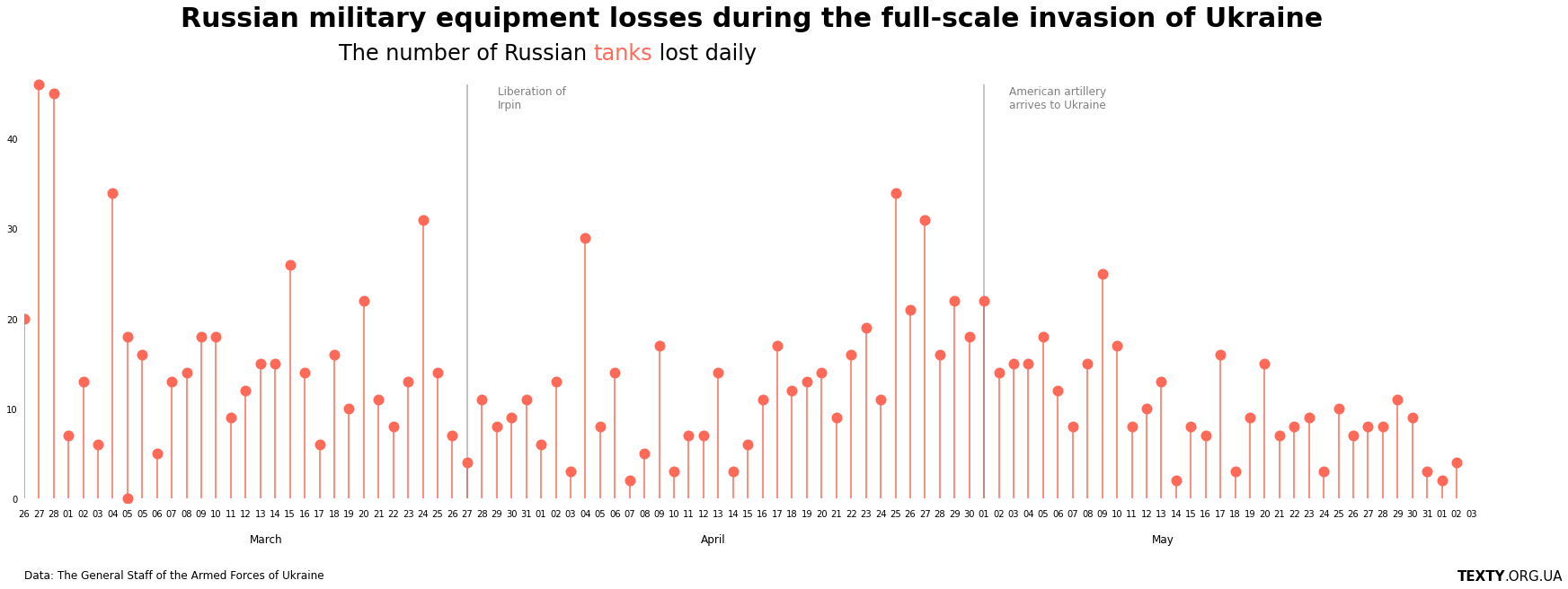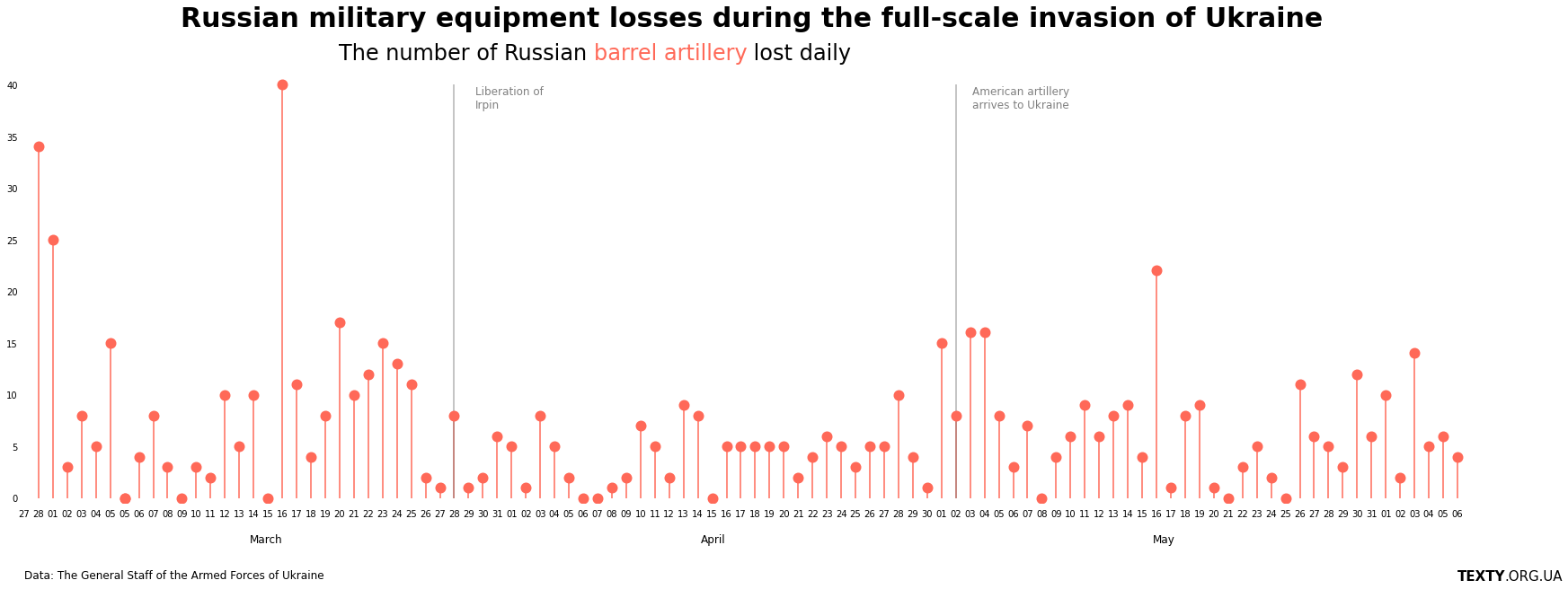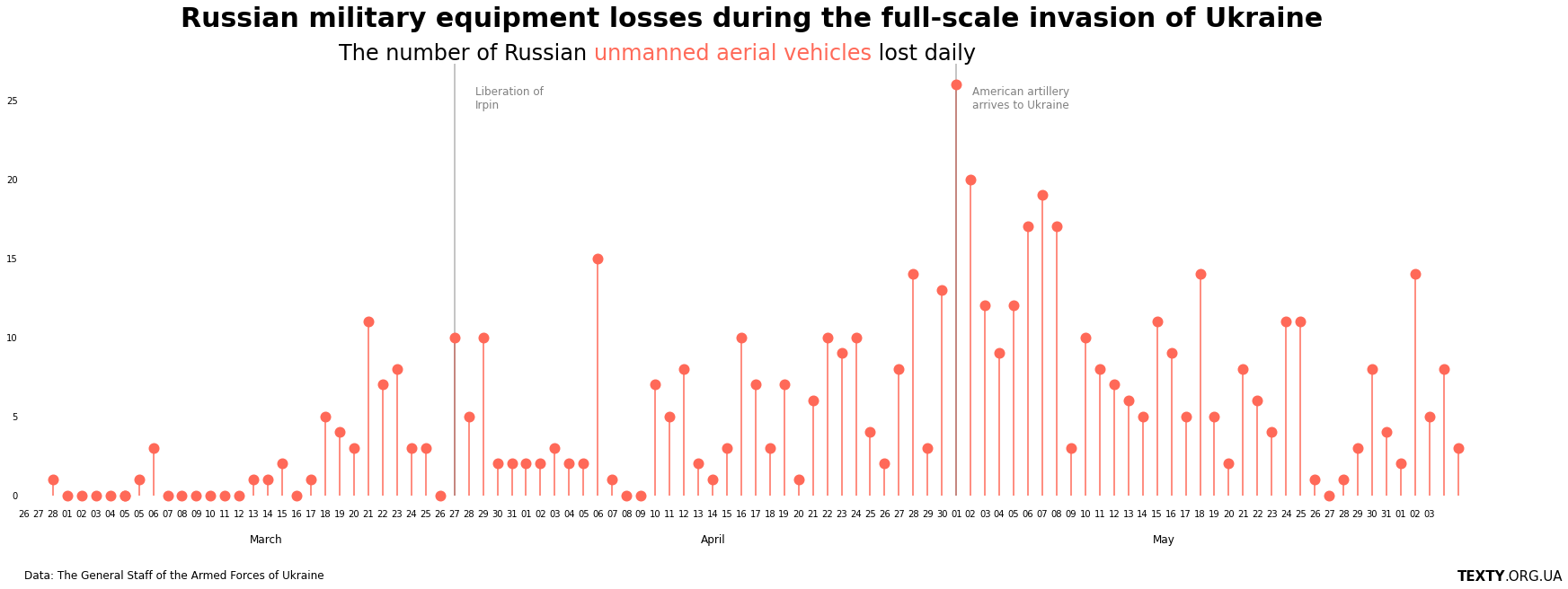Fewer tanks, but more artillery and drones: the dynamics of Russian military losses in Ukraine
The dynamics of Russian military losses show that the nature of the war in Ukraine has changed over the past few weeks. First of all, the loss rate of tanks has decreased
after passing its peak in early May. From 1 to 12 May, Russian troops tried to land on the west bank of the Siverskyi Donets river, the main strategic line of defensdefense forefor the Ukrainian army. Much telling was the failed landing attempt near Bilohorivka, when Russian troops lost dozens of pieces of military equipment and had potentially hundreds of soldiers killed and wounded in action.

The loss rate of other armoured vehicles and military personnel remains approximately the same since 18 April when the "battle of Donbas" began. The loss rate of artillery and drones is increasing instead. This may indicate that at this stage of the war, Russian army relies on superior firepower since the stocks of armoured vehicles continue to diminish steadily. This is also apparent through the use of obsolete T-62 tanks.

In early May, the loss of Russian artillery has noticeably increased. This may have several explanations. First, the Russians began to rely more on the artillery firepower and consequently lost more as a result of counter-battery fire strikes. Second, the Ukrainian armed forces have become more effective in destroying Russian guns thanks to the long-range howitzers received from the western allies and the regular supply of shells and projectiles, as well as counterbattery radars, that were previously scarce. You can read how these radars work here.
To use the artillery successfully, guns are not enough. Good intelligence that can help find targets, adjust the artillery fire and confirm the damage is crucial. Both armies rely mainly on unmanned aerial vehicles (UAVs) for reconnaissance and surveillance support on the battlefield.
At the beginning of the war, Russian military barely used military drones, but after the beginning of the operation in Donbas, their loss rate significantly increased. What indicates this? It is likely that the Russian army was “moving in the dark” in the early days of the war, without using reliable intelligence. Only after sustaining considerable losses did the Russian troops begin to use (and therefore lose) UAVs. It is possible that sufficient supply of the man-portable air-defense systems in the Ukrainian army have also yielded some results. The highest number of drones destroyed was recorded in early May during the failed Russian attempts to cross the Siverskyi Donets in Luhansk region. Currently, the number of destroyed UAVs continues to grow, as is the number of destroyed artillery.


